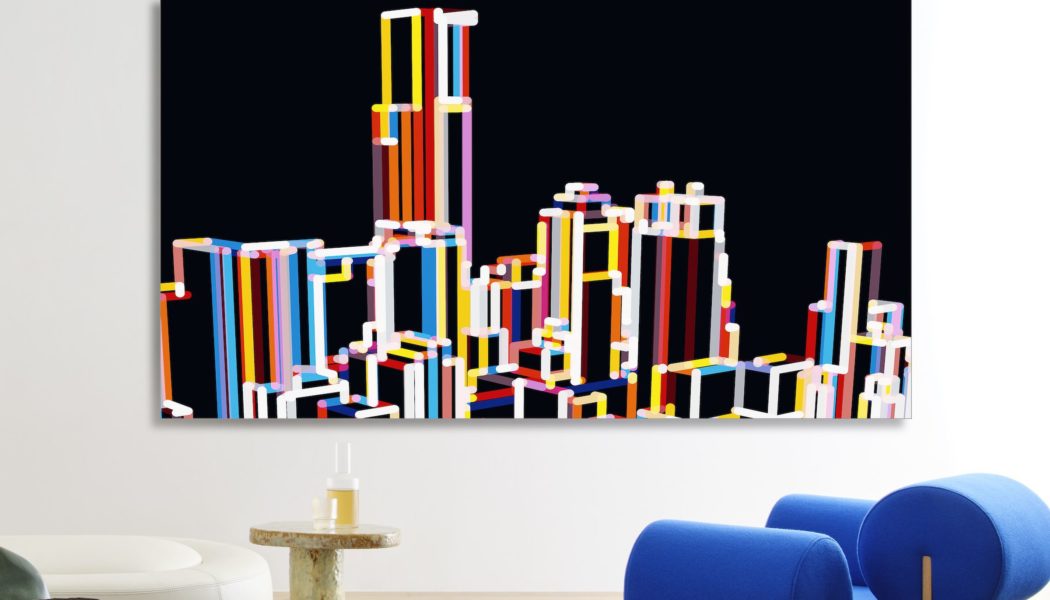Automatic HDR conversion for SDR content, a ton of new apps and software features, and processing enhancements are what Samsung has focused on in 2023.
:format(webp)/cdn.vox-cdn.com/uploads/chorus_asset/file/24334757/lede.jpg)
Last year, Samsung radically shook up the TV market with the introduction of its first OLED model in many years. And it used a new QD-OLED (quantum dot) panel that produces superior color brightness compared to popular OLED sets from LG.
2023 is going to be decidedly low key by comparison. Instead of introducing yet another flashy new TV to its portfolio, Samsung is focused on improving everything down the line. And most of the refinements in this year’s Neo QLED (Mini LED in Samsung parlance), QLED (standard LCD sets), and OLED TVs are centered around AI and enhanced picture processing. Things like a greater, more three-dimensional sense of depth, improved upscaling, and more. The hardware features you’d expect on premium models, including VRR up to 144Hz, are all present. But Samsung’s really talking the most about software.
That’s proving to be something of a theme here at CES 2023. The reality is that most high-end TVs are excellent these days. The growing pains of 4K120Hz gaming and other HDMI 2.1 features have passed. Consumers face a can’t-lose choice between super bright Mini LED TVs and super contrasty OLEDs. So with the hardware in a good place, TV makers are increasingly looking towards new software and image processing tricks to stand out.
a:hover]:shadow-highlight-franklin [&>a]:shadow-underline-black dark:[&>a:hover]:shadow-highlight-franklin dark:[&>a]:shadow-underline-white md:text-30″>New Neo QLED TVs automatically convert SDR to HDR
Take Samsung’s new Neo QLEDs for example. There’s a new Auto HDR Remastering feature that “uses AI deep learning technology to analyze and apply real-time high dynamic range (HDR) effects on standard dynamic range (SDR) content on a scene-by-scene basis, making SDR content brighter and livelier for absolute immersion.” Some people are going to absolutely love that; others might be a little hesitant over how it reimagines creator intent to account for HDR. But hey, it’s optional. The system compares SDR content with HDR material and uses deep learning to analyze the differences and then make the conversion.
Samsung has quadrupled the number of dimming blocks across its Mini LED lineup, and the company says this has all but eliminated blooming. The TVs also now use 14-bit processing to enhance shading gradation and reduce compression artifacts, bringing out more detail in various scenes — especially dark ones.
a:hover]:shadow-highlight-franklin [&>a]:shadow-underline-black dark:[&>a:hover]:shadow-highlight-franklin dark:[&>a]:shadow-underline-white md:text-30″>Futuristic MicroLED displays are getting smaller and more TV-like
:format(webp)/cdn.vox-cdn.com/uploads/chorus_asset/file/24334740/microled.jpg)
When Samsung introduced its modular MicroLED display called The Wall several years ago, the pitch was that you could make it any size or shape that you wanted. But more recently, Samsung has downsized its MicroLED screens — still maintaining the no-bezel modularity — into sizes that resemble more traditional TVs. And for the first time in 2023, it won’t necessarily require professional installation. Samsung describes the new 76-inch MicroLED CX as “the world’s smallest and most affordable MicroLED screen.”
Between its unmatched screen performance and advanced technologies, MicroLED CX heralds a brighter, more luxurious future for consumer televisions. Additionally, its 20-bit black detail, 240Hz variable refresh rates, and 2-nanosecond response time solidify the 76-inch MicroLED CX’s display as the gold standard of picture quality, no matter what you’re watching or playing.
Samsung isn’t spilling any details on that “most affordable” price yet, but it’s destined to cost far, far more than even the company’s flagship 8K Neo QLED TV. As a refresher, MicroLED carries many of the benefits of OLED (like self-lit pixels) without the organic downsides and with practically no chance of burn-in over extended periods.
a:hover]:shadow-highlight-franklin [&>a]:shadow-underline-black dark:[&>a:hover]:shadow-highlight-franklin dark:[&>a]:shadow-underline-white md:text-30″>Samsung’s strategy for improving The Freestyle is having you buy two of them
:format(webp)/cdn.vox-cdn.com/uploads/chorus_asset/file/23340392/glasstable.jpg)
I wasn’t a fan of Samsung’s overpriced portable project, The Freestyle. It’s got a sleek, clever design and a lot of nice ideas, but the execution was badly flawed. The company is giving it another try in 2023 and has come up with a new “Edge Blending” feature that “allows two Freestyles to synchronize their projections into one ultra-wide display.”
In those mode, each Freestyle beams out half of the picture, and the combined image can reach up to 150 inches. It’s then automatically keystoned and adjusted to display properly on your wall. The Freestyle is also picking up Samsung’s Gaming Hub (including the Xbox app). Unfortunately, Samsung hasn’t disclosed whether it will offer a brighter output. But it has been optimized for “metaverse applications.” Okay then.
a:hover]:shadow-highlight-franklin [&>a]:shadow-underline-black dark:[&>a:hover]:shadow-highlight-franklin dark:[&>a]:shadow-underline-white md:text-30″>The Frame is getting improvements to its fit and finish
:format(webp)/cdn.vox-cdn.com/uploads/chorus_asset/file/23360320/cwelch_220331_5121_0006.jpg)
In 2022, Samsung gave The Frame an antiglare matte finish that made its artwork mode look all the more convincing — and much less like a TV. This time the improvements are a bit smaller. The company says there are new metal bezel options “and more realistic wood finishes” being offered. Plus, you can opt for a sold-separately “automatic rotating mount will allow for landscape or portrait display of art.”
a:hover]:shadow-highlight-franklin [&>a]:shadow-underline-black dark:[&>a:hover]:shadow-highlight-franklin dark:[&>a]:shadow-underline-white md:text-30″>So many new software features
Mother of God. Just look at all of this stuff. 8K NFTs. A FaceTime competitor for the TV screen. Telemedicine and remote health monitoring apps. Important accessibility improvements. That’s in addition to everything Samsung has already crammed into its Tizen TV OS. It’s a lot
The Art Store: With access to over 2,500 pieces curated by world class galleries, The Art Storeallows users to customize the screen to their personal taste. In 2023, the Art Store 2.0 will feature a more user-friendly on-screen experience. Samsung has partnered with the world’s leading NFT marketplaces to deliver this unique content in new ways. The new NFT platform delivers a diverse selection of carefully curated NFTs and the new UI even features events promoted by Samsung partners and feature more than 1,000 artists. Finally, with 8K NFTs over-indexing among purchasers of NFTs, Samsung partnered with Savage, a leading provider to deliver art in stunning 8K resolution.
Relumino Mode: The first technology that empowers people with low vision to enjoy their favorite shows, movies, and games without needing wearable hardware. With the click of a remote, Relumino, which translates from Latin to “return the light,” enables televisions to use Samsung-developed artificial intelligence to dynamically outline the edges of on-screen elements and rebalance colors. This enables virtually anyone to better see people, objects, and text.
Health Monitor: Samsung’s first TV-based health monitoring service. Built for the latest Neo QLED TV, OLED TVs, and Smart Monitors, Samsung’s new in-home health monitoring technology leverages an optional attachable camera to offer users the ability to monitor their own health without invasive physical diagnostics. Samsung’s camera analysis measures five key vital signs – heart rate, heart rate variability, respiratory rate, oxygen saturation, and stress index – all from your couch. It does this by using remote photoplethysmography (rPPG), an intelligent computer vision technology that assesses vital signs by detecting changes in facial skin color caused by heartbeats.
The system is opt-in, contactless, accurate and easy to use.
Samsung Telemedicine: Samsung Telemedicine is a new application developed specifically for our smart TVs and engineered to make big-screen telemedicine appointments simple for those seeking at-home medical care. Users can select from a list of symptoms, indicate how long they’ve been present, and the app will show relevant available doctors. A doctor will generally connect within 60 seconds, then conduct an exam through video conferencing via the app and with devices such as a Samsung Galaxy Watch or other devices. Once the exam is complete, users can rate their experience, schedule a follow-up, or fill a prescription remotely and have it delivered directly to their doorstep all via the on-screen app.
Chat Together: Chat Together is the world’s first TV-embedded platform that allows real- time communications while watching live TV. It allows you to easily communicate with people outside the home in real-time. Moreover, the mobile app, available on both Android and iOS, allows users to quickly respond to both TV and mobile platforms using a single interface. The whole connection process is done simply by downloading the mobile app and tapping the BLE pop-up.
Samsung will release pricing and availability details for its 2023 lineup in the coming months. There’s a lot to like, but nothing that’s necessarily groundbreaking. If you just recently bought a TV, this is one of those CES years where you’re probably not all that jealous of what’s around the corner.









